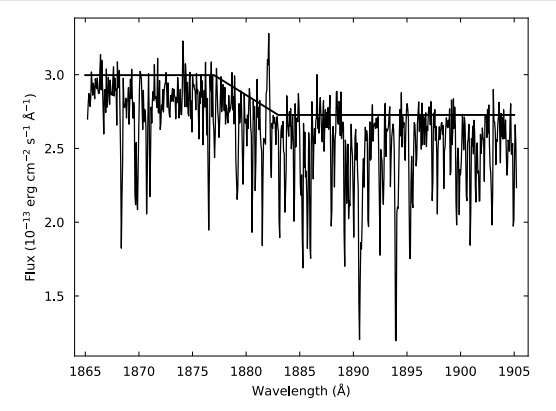March 11, 2019 report
New study uncovers insights about the nature of the ultraviolet-bright star Barnard 29

Analyzing data from spectroscopic instruments, astronomers have reported fundamental properties of Barnard 29, an ultraviolet-bright star in globular cluster Messier 13. Results of the analysis, presented in a paper published March 1 on arXiv.org, provide important insights into the nature of this star.
Barnard 29 has intrigued astronomers for over a century. It was described in the earliest studies as the most striking example of a star shining with a much bluer light than the great majority of the cluster's other stars. According to more recent observations, Barnard 29 is classified as an ultraviolet-bright, post-asymptotic giant branch (AGB) star.
Although Barnard 29 has been a subject of numerous observations, still many questions about its evolution and chemical composition remain unanswered. So a team of astronomers led by William V. Dixon of Space Telescope Science Institute in Baltimore, Maryland, has combed through the available data from the Hubble Space Telescope's FUSE, COS and GHRS spectroscopic instruments and from the HIRES echelle spectrograph on the Keck I telescope in Hawaii. Analysis of this dataset allowed the researchers to determine chemical abundances for more than dozen elements in this star.
"The availability of high-resolution, high signal-to-noise FUV and optical spectra allow us to confirm the star's iron abundance and determine the abundances of many additional species," the astronomers wrote in the paper.
The research revealed that Barnard 29 has chemical composition typical for first-generation stars in Messier 13. The object was found to be richer in oxygen and poorer in aluminum than second-generation stars in this cluster.
However, the star exhibits an underabundance of carbon and an overabundance of nitrogen, which indicates that it experienced a non-convective mixing on the red-giant branch (RGB) and did not undergo third dredge-up. Moreover, chemical abundances of Barnard 29 appear to have changed little since it left the RGB.
"The abundance pattern seen in Barnard 29—C depletion and N enhancement relative to the average value for first-generation stars on the RGB—suggests that the star experienced the full impact of deep mixing," the paper reads.
Furthermore, the researchers found that Barnard 29 has an effective temperature of approximately 21,400 K and a mass of about 0.5 solar masses. They also found that iron abundance of this star is -6.05, consistent with the mean value for Messier 13.
According to the paper, results of the study suggest that Barnard 29 evolved from a zero-age horizontal-branch (ZAHB) star with a mass of around 0.5-0.55 solar masses, near the boundary between the extreme and blue horizontal branches.
"In light of stellar-evolution models, it seems likely that Barnard 29 is a post-HB star evolving from a ZAHB star with MZAHB between 0.50 and 0.55 M, a range spanning the EHB/BHB boundary. A post-HB star would have fully ascended the RGB, consistent with our suggestion that Barnard 29 experienced the full effects of non-convective mixing on the RGB," the scientists explained.
More information: William V. Dixon et al. Observations of the Ultraviolet-Bright Star Barnard 29 in the Globular Cluster M13 (NGC 6205). arXiv:1903.00350 [astro-ph.SR]. arxiv.org/abs/1903.00350
© 2019 Science X Network


















